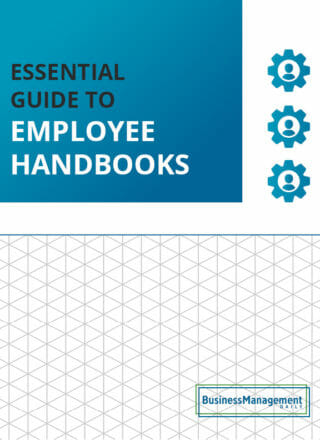Time off in lieu (TOIL) Is it right for your business?
Time off in lieu (TOIL): A guide to effective management
Sometimes, you have to work late.
Whether it’s a last-minute deadline or covering a shift during busy periods, more than 40 hours a week is needed to meet work demands. And extra work requires extra compensation.
Employers typically compensate for extra work with overtime pay. The legal requirement for non-exempt employees is 1.5x their average hourly rate, which helps them feel better about staying late at the office.
However, more money is sometimes the best or preferred option for some workers. Time off in lieu (TOIL) may be a better alternative for compensating employees who go the extra mile.
TOIL can take some getting used to. This blog will explore everything you need to know about effectively making TOIL part of your company policy.
What is time off in lieu?
Time off in lieu (TOIL) compensates overtime work with additional time off rather than money. When employees put in overtime hours to get a project across the finish line, they receive more vacation time “in lieu”/instead of a bigger paycheck.
Granting extra time off may seem like a slight difference, but its role can be significant in recharging the kind of employee who only sometimes knows when to take a break.
The philosophy behind TOIL
 Every company wants a hardworking expert—a veteran who knows what to do and where to find answers when time is scarce on an important deadline. TOIL is a workplace practice that rewards these employees’ contributions and makes a real contribution to their well-being.
Every company wants a hardworking expert—a veteran who knows what to do and where to find answers when time is scarce on an important deadline. TOIL is a workplace practice that rewards these employees’ contributions and makes a real contribution to their well-being.
Financial rewards are essential—they’re the reason we work—but rest and recovery are vital in maintaining an employee’s long-term productivity and happiness. Offering time off policies shows that a company recognizes the need for work-life balance, especially after intense work.
Sometimes, highly paid workers need to recharge more than they need money.
Industries that use TOIL
TOIL is often used in industries where work demands fluctuate or provide little time off. Employees in high-demand jobs must be focused for long periods, which becomes unsustainable after too long. After days spent locked in, a bigger paycheck is only sometimes as valuable as a chance to disconnect and recharge fully.
Industries where TOIL appears, include:
- Healthcare: During emergencies, healthcare workers work long, uninterrupted, emotionally challenging shifts. TOIL provides them with a chance to recover and come back refreshed.
- Hospitality: Employees who work during public holidays may be busier than ever when everyone else is on break. TOIL gives them a chance to have their 3-day weekend.
- Retail: You’ve seen videos of Black Friday—retail workers man the front lines of increasingly long shopping seasons, and they benefit significantly from being able to forget about customers for a while.
- Technology: All-nighters aren’t unusual for developer teams preparing to launch a new product or update. TOIL is a great way to give them a day off to catch up on sleep and keep doing their best work after crunch time.
- Creative agencies: After successfully coordinating design, marketing, and production teams to meet a big deadline, TOIL can be a priceless gift to let creative teams sit back and enjoy the fruits of their labor.
There’s no wrong way to utilize TOIL, though it seems more relevant to higher-paying positions requiring extended periods of focus and effort. Also, not all employees want extra time off—TOIL must be available to those who do.
When should you use TOIL?
Some employees need the extra income from overtime pay. They feel okay with the current arrangement and aren’t too worried about getting a more extended break from work. These are not the prime candidates for TOIL.
For others—especially those with demanding personal lives—being able to take time off at a later date is a godsend.
Ask what your employees want so you can tailor your approach to their individual preferences. An explicit written agreement may be necessary so that employees have concrete records of using overtime compensation.
Examples of TOIL in action
TOIL is used in special cases, but not all the time. Earning a couple of hours of overtime doesn’t warrant moving heaven and earth to wedge in that same amount of time off. Instead, TOIL comes into play during a major crunch.
You may want to offer TOIL in scenarios such as:
- Asking your software development teams to work late on resolving a significant bug
- Planning, putting on, and cleaning up after a major industry or company event
- Having manufacturing teams clock extra shifts during periods of high demand
- Offering volunteer hours outside the usual workweek
Recovery is the name of the game when it comes to TOIL. Extra time off policies work best when they allow workers to recover after intense work hours.
The rules of TOIL
A lieu policy is only effective if it is transparent, fair, and legally compliant (laws governing overtime pay) also govern its substitutes). Employers must follow established guidelines to protect their team and business.
Legal requirements
In the U.S., non-exempt workers working more than 40 hours a week are entitled to 1.5x pay for each additional hour worked. Exempt (salaried) employees aren’t usually paid for overtime hours, though TOIL can be used to compensate them anyway.
Private employers (non-government companies) cannot offer TOIL to non-exempt employees, so don’t use time off in lieu of overtime pay.
The term “compensatory time off” applies to government employees who work more than 40 hours a week. These employees must use up all accrued time off by year’s end.
Labor laws vary by state, so review how they apply to your company.
Best practices for a time off in lieu policy
Deploying TOIL is similar to granting overtime pay. Employers must still use time-tracking systems to record employees’ work hours. From there, however, companies can adapt TOIL to their own goals.
Your company’s TOIL policy needs to:
- Define accrual limits so employees can spend their extra time off without causing administrative overload
- Set expiration rules to prevent indefinite accrual of time off
- Be flexible in letting employees convert unused TOIL into payment at the overtime hourly rate
- Communicate policies transparently in each employee’s contract so they understand this particular entitlement
Ask employees to use TOIL the same way they use traditional PTO—request time off well in advance (unless the TOIL is for a specific day) and try to stagger time off requests so your office stays adequately staffed.
Let employees use their time
One troubling trend of the last decade is unlimited time-off policies so restrictive that no one can ever take time off.
Employees may be hesitant to cash in their TOIL, but it’s essential that they do. Ensure employees can use the time off they earned without fear of judgment or penalty.
Restricting TOIL usage creates distrust in the employer-employee relationship, leading to burnout, low productivity, and higher turnover.
Build a TOIL policy
First, identify which employees are eligible. Just because someone works occasional overtime doesn’t mean they need extra time off, though your policy should always be consistent. TOIL applies to all overtime work or specific situations, such as working on a major holiday.
Next, establish a conversion rate for TOIL. Time and a half may not convince someone to work Christmas Day, but they might bite if you offer 2 hours of TOIL per extra hour.
Keep accurate records of all overtime hours worked. This is crucial to maintaining fairness and preventing disputes should someone want to cash in on their TOIL.
Finally, encourage employees to use their TOIL. A couple of months before your busy period, send out a companywide email to set clear expectations about when and when not to request time off.
You may need to declare blackout dates during peak times to avoid disruptions, but employees should feel able to take time off without hesitation.
Here, managers can lead by example by taking their earned time off.
Challenges with a TOIL policy
The benefits of TOIL are many. Following a busy work season, people get a real break and a chance to recharge. However, the policy has its challenges.
For starters, tracking TOIL requires accurate record-keeping. Full-time employees aren’t always used to billing their hours, so you may have to tinker with timekeeping policies to get the program up and running. Thankfully, plenty of time-tracking apps are out there to help HR teams stay organized.
Another concern is understaffing. If everyone gets the day off, who puts out fires should one arise in their absence? This is a genuine concern, but staggering time off requests is a great way to maintain a functional crew and avoid staffing concerns.
Using time off in lieu (TOIL) effectively
Time off in lieu is a versatile approach to paying employees for additional hours worked. It’s flexible, fair, and more valuable than money alone—sometimes, people need a day off.
By valuing employees when they go above and beyond, businesses create a sustainable work environment that benefits everyone.
More resources:
Internal recruitment: The ultimate guide to finding hidden talent ![]()
Understanding the importance of employee motivation ![]()
Navigating a toxic work environment: Strategies for survival ![]()






